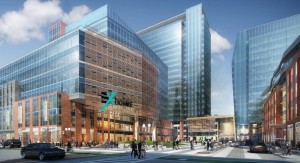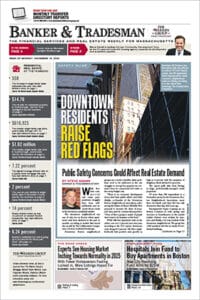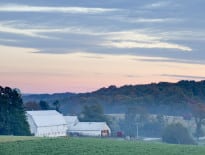Boston’s lower South End became synonymous with luxury condominiums, organic food and high-end fitness concepts in its recent transformation. Now developers think the time is ripe to test the market for life science and corporate-grade office space.
Experienced Boston-area real estate firms are advancing plans for 2 million square feet of office and lab towers along the I-93 south corridor, effectively tripling the existing inventory. The pipeline includes three projects capable of accommodating more than 9,000 office and lab workers.
Burlington-based Nordblom Co. is set to break ground this summer on an 8-story office tower above its 321 Harrison Ave. garage, with the goal of attracting a corporate headquarters to the high-visibility site.
Nordblom has had preliminary talks with software developers, lab users, shoe companies and back office medical tenants about space requirements in the 100,000 to 150,000 square foot range, said Todd Fremont-Smith, Nordblom’s senior vice president. That’s an increasingly scarce commodity in Boston’s office market, and Fremont-Smith expects space to tighten further by the time 321 Harrison is ready for tenant fitouts in early 2020.
“Back Bay is full, and the Seaport and central business district is full, generally speaking,” he said. “Boston has to grow a little bit south. Traditionally it’s not been a class A office market, but it doesn’t take much imagination thinking about a high-profile company wanting to be in that neighborhood.”
Nordblom and partner CIM Group are using their own equity to fund the initial stages of the speculative project. Foundation work for the office addition will begin in August, Fremont-Smith said. Asking triple-net rents per square foot will be in the high $30s range.
Opportunities to Link to Life Science
Comparisons between South End and Cambridge’s Kendall Square life science hub aren’t that farfetched to The Abbey Group, which is seeking approvals for 1.6 million square feet of office and lab space at the former Boston Flower Exchange site on Albany Street.
Up to 840,000 square feet of lab-ready space would be built on lower floors of the four buildings, which would step up in height toward the edge of the property that borders I-93.
Noting life science companies’ tendency to cluster together, Abbey Group Principal Audrey Epstein Reny said that the site borders the Boston University Medical School campus. And Arietis, a biotech researcher at BU’s Bio Square Discovery and Innovation Center, topped all Boston private firms in NIH funding last year at $2.2 million. That points to opportunities to lease space to nearby early-stage biotech companies as they expand toward commercialization.
While the four-building development will include ground-floor retail and more than an acre of public open space, Reny said the South End’s lively restaurant scene and mature neighborhood fabric will provide a significant advantage attracting tenants.
“When we looked at the South End, everything employers would be looking for existed already, and we’d be able to build on the fabric of that neighborhood by adding the commercial office component,” she said.
Boston-based Druker Co. is taking a more conservative approach to development of EB 80, a 308,000-square-foot office building at 80 East Berkeley St. which received final approvals in 2013. Druker is holding off on groundbreaking of the 11-story tower, which will include 12-foot ceilings, a roof deck and five outdoor terraces, pending signing of a significant lease, Executive Vice President Harold Dennis said.
Vacancies in the 1.25-million South End/Crosstown office submarket have fallen to 4.5 percent, less than half the citywide average, according to research by Colliers International Boston.
“It’s one of the few value spots you can find within the city of Boston,” Colliers Director of Research Aaron Jodka said. “But the new product will push rents much higher.”
The advent of class A office and lab developments along the Southeast Expressway reflects the increasingly tight office market in downtown Boston and Cambridge, which has spurred major developments in a series of once-overlooked submarkets such as North Station, Somerville and Allston. Neighborhood-transforming projects such as The Hub on Causeway, Assembly Row and Boston Landing used their on-site transit stations as a selling point.
While the South End developments lack those direct transit connections, the neighborhood has MBTA bus and Silver Line routes and walkability to large residential and potential employee populations, said David Fitzgerald, a partner at CBRE/New England.
“In many respects, the South End is the opposite of the Seaport District,” Fitzgerald said. “The Seaport was a lot of office space initially, but no services and residential. The South End has been a mature residential marketplace with all the services, and now the offices are coming in.”







